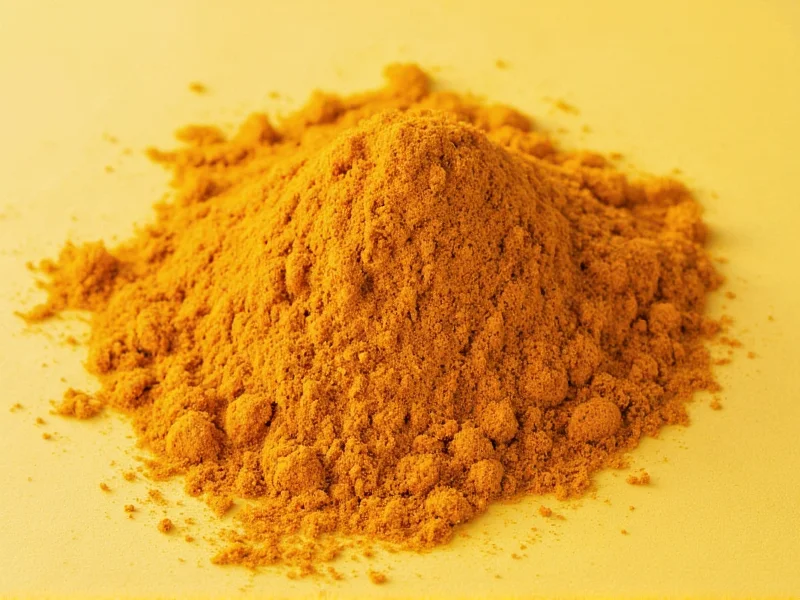When searching for alternatives to turmeric, understanding your specific need is crucial. Turmeric alternatives vary significantly based on whether you're seeking a culinary substitute, a health supplement replacement, or a natural coloring agent. This comprehensive guide examines the most viable options with scientific backing and practical usage recommendations.
Why Consider Turmeric Alternatives?
People explore natural alternatives to turmeric for several valid reasons. Some experience gastrointestinal discomfort from curcumin, turmeric's active compound. Others face availability issues or prefer substitutes with different flavor profiles. Certain medical conditions may warrant avoiding turmeric, while culinary professionals often seek alternatives for specific dishes where turmeric's distinct earthy flavor would be overpowering.
Top Evidence-Based Turmeric Substitutes
Ginger: The Anti-Inflammatory Alternative
Ginger serves as an excellent natural alternative to turmeric for inflammation management. Both belong to the Zingiberaceae family and share similar anti-inflammatory compounds, though through different biochemical pathways. Ginger contains gingerols instead of curcumin, providing comparable benefits for joint health without turmeric's distinctive yellow coloring. When searching for anti-inflammatory alternatives to turmeric without staining, ginger proves particularly valuable.
Saffron: Premium Color and Flavor Replacement
For those needing what spice can replace turmeric in recipes while maintaining vibrant color, saffron offers the closest visual match. Though significantly more expensive, saffron provides a golden hue with a more delicate floral flavor profile. Use approximately 15-20 saffron threads to replace one teaspoon of turmeric. This substitution works exceptionally well in rice dishes and sauces where turmeric's earthiness might dominate.
Curry Powder: Convenient Culinary Alternative
Curry powder contains turmeric as a primary ingredient but offers a more complex flavor profile. When you need quick turmeric substitute for cooking Indian food, curry powder provides immediate solution without recipe recalibration. Most commercial blends contain 20-30% turmeric, so use approximately 1.5 times the amount of curry powder to replace turmeric while maintaining similar color intensity.
Annatto: Natural Coloring Agent
Annatto seeds provide vibrant yellow-orange coloring without turmeric's distinctive flavor. This makes annatto ideal when seeking natural food coloring alternatives to turmeric for dairy products, cheeses, and processed foods. Unlike turmeric, annatto doesn't offer significant anti-inflammatory benefits but serves as excellent visual substitute in culinary applications where color matters more than health properties.
Paprika: Mild Flavor Alternative
For those sensitive to turmeric's earthy taste, paprika offers a milder alternative with similar coloring properties. Sweet paprika works best as mild turmeric substitute for sensitive palates, while smoked paprika adds complexity to dishes. Use a 1:1 ratio when substituting in recipes, though note that paprika lacks turmeric's anti-inflammatory compounds.
| Alternative | Best For | Flavor Profile | Health Benefits | Substitution Ratio |
|---|---|---|---|---|
| Ginger | Anti-inflammatory needs | Pungent, spicy | Digestive health, nausea relief | 1:1 for health benefits |
| Saffron | Premium dishes, color | Floral, delicate | Mood support, antioxidants | 15-20 threads per tsp turmeric |
| Curry Powder | Indian cuisine | Complex, warm | Varies by blend | 1.5:1 ratio |
| Annatto | Coloring without flavor | Mild, slightly peppery | Limited | 1:1 for color |
| Paprika | Mild dishes | Earthy, sweet | Vitamin C, antioxidants | 1:1 ratio |
Selecting the Right Alternative for Your Needs
Choosing the best alternative to turmeric depends entirely on your specific requirements. For cooking alternatives to turmeric in curry recipes, curry powder provides the most seamless transition. When seeking medicinal alternatives to turmeric for arthritis, ginger offers the most comparable anti-inflammatory benefits. Professional chefs exploring commercial turmeric substitutes for food production often prefer annatto for consistent coloring without flavor interference.
Safety Considerations with Turmeric Alternatives
While generally safe, some alternatives require consideration. Saffron in excessive amounts can cause adverse effects, with toxic doses starting around 5 grams. Those on blood thinners should consult physicians before substituting with ginger, which also has blood-thinning properties. When exploring safe alternatives to turmeric during pregnancy, consult healthcare providers as some substitutes like high-dose ginger may not be recommended.
Frequently Asked Questions
What is the closest substitute for turmeric in cooking?
Curry powder serves as the closest culinary substitute for turmeric since it typically contains turmeric as a primary ingredient along with complementary spices. For dishes where turmeric's earthy flavor would be overpowering, paprika provides a milder alternative with similar coloring properties while maintaining visual appeal without the distinctive turmeric taste.
Can I replace turmeric with ginger for health benefits?
Yes, ginger makes an excellent alternative to turmeric for anti-inflammatory benefits. Both contain bioactive compounds that reduce inflammation, though through different mechanisms. Ginger's gingerols provide comparable joint health support without turmeric's staining properties. For those seeking natural alternatives to turmeric for arthritis relief, ginger supplements standardized to 5% gingerols offer similar therapeutic effects.
What spice gives similar color to turmeric without the flavor?
Annatto provides the most similar yellow-orange coloring to turmeric without imparting a strong flavor. When searching for natural food coloring alternatives to turmeric, annatto works particularly well in dairy products, cheeses, and processed foods where turmeric's earthy taste would be undesirable. Saffron also provides excellent coloring but comes with a distinctive floral flavor and higher cost.
Are there any alternatives to turmeric for people with curcumin sensitivity?
For individuals with curcumin sensitivity, ginger and paprika serve as excellent alternatives. Ginger provides similar anti-inflammatory benefits through different compounds, while paprika offers comparable coloring with a milder flavor profile. When seeking safe alternatives to turmeric for sensitive individuals, these options avoid the specific compounds that may trigger reactions while maintaining functional benefits in both culinary and health applications.











 浙公网安备
33010002000092号
浙公网安备
33010002000092号 浙B2-20120091-4
浙B2-20120091-4